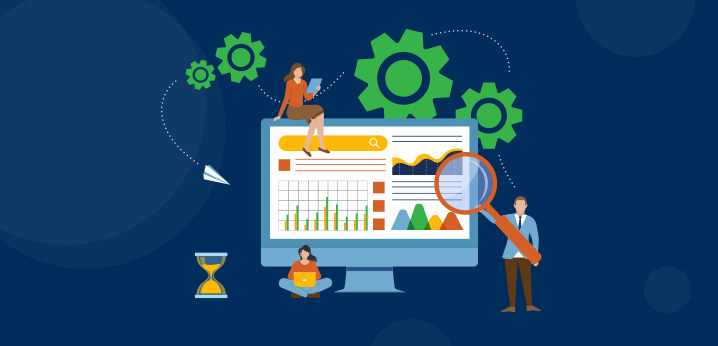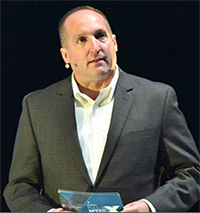
The Power of AI-Powered and Data-Driven Process & Task Discovery
SHARE THIS:
By Todd Michaud, HuLoop CEO
Enterprise software platforms are big business—which means significant investment of people and resources to utilize them across a business. But how do companies better understand how their employees are interacting with the processes and technology platforms that are driving their business? More importantly, how do companies increase productivity, simplify business processes and bridge the technology solutions they’ve invested in to improve return-on-investment? The answer lies in data-driven process and task discovery.
What is Data-Driven Process and Task Discovery?
Data-driven process and task discovery is the process of seeing, understanding and changing how a company’s people, processes and technology intersect. In order to drive successful digital transformation, businesses need to start by looking at where work is taking place—at the individual level, across teams and departments, and even cross-functionally.
While the goal of enterprise software platforms such as SAP, Oracle and Salesforce is automation, there are often processes that occur on top of and between these applications. For example, there may be one or several manual processes involved if an organization needed to transition sales lead information captured in Salesforce to order information in SAP. This can equate to up to 70% of a company’s task level work being manual, or not automated by enterprise software, in some cases.
However, by using process and task discovery software, businesses can:
- Identify how their people, processes and technology are interacting
- Interpret and analyze the information
- Identify opportunities for change
How It Works
Hyperautomation software solutions are critical for improving automation efficiency and workforce productivity. Data-driven process and task discovery is the diagnostic capability—the precursor—to identify the business challenges that hyperautomation needs to solve.
By monitoring user desktop activity (with appropriate privacy protocol in place), process and task discovery generates and delivers information around two key areas: application intelligence and people intelligence.
Application Intelligence provides holistic, real-time data that can be revisited and analyzed at any time. The data spans from how one individual uses one application to how the entire organization is using multiple enterprise platforms—all while ensuring there is zero interruption in day-to-day work. As a result, businesses can understand productivity and identify best practices and automation opportunities.
People Intelligence identifies and analyzes user actions across and between systems, providing insight into how complex work really gets done. The resulting data helps businesses understand productivity, identify best practices in automation, as well as improvement potential and return-on-investment.
Both application intelligence and people intelligence provide helpful information for an organization, but it’s the aggregation of both that illuminate the “real” current business model. Data-driven process and task discovery auto-generates a holistic look at how a business truly operates by aggregating and filtering through operational structures. By using the power of task and process mining, process and process variants can be analyzed and ultimately, optimized.
Actionable Intelligence
Data-driven process and task discovery provides valuable intelligence on the real flow of work. By capturing dozens—if not, hundreds—of business processes, repetitive, mundane tasks that are candidates for intelligent automation will be identified. For example, data-driven process and task discovery may calculate that productivity could be improved by 10%, 15% or even 20% if a particular task was automated throughout the organization. By identifying specific business processes and tasks that could be automated and easily accomplished by digital assistants or bots, employee time can now be allocated toward more valuable tasks that yield higher ROI.
Data-driven process and task discovery creates an automation pipeline through the following:
- Capturing business tasks and processes
- Analyzing workflow and “real” business model
- Generating prescriptive recommendations for how to improve productivity and ROI through automation
What Next?
As previously mentioned, data-driven process and task discovery is the precursor to an automation initiative, or diagnostic component of a hyperautomation suite. In order to gain true business value from the discovery data, businesses must connect the diagnostic piece with the prescriptive remedy platform. In simpler terms, process and task discovery identifies the pain points within a company’s workflow, and a robust hyperautomation suite solves the problems. The end result? Digital transformation.
In order to effectively meet an organization’s automation needs, robust hyperautomation platforms should offer the following:
- Robotic Process Automation (RPA) – this is the ability to build, deploy and manage software bots or digital assistants that emulate human activities.
- Intelligent Document Processing (IDP) – this involves the loading, digitizing, classifying, extracting, redacting, validating and exporting documents.
- Business Process Automation (BPA) – this is the orchestration and automation of complex processes across disparate systems.
- Intelligent Data Automation (IDA) – this is the identifying, collecting, validating and publishing data automatically.
- Software Test Automation (TA) – this is the creation, execution and analysis of an array of tests comparing actual, expected outcomes.
But how does this work in practice? Data-driven process and task discovery automatically generates current business models for an enterprise. By illuminating complex business processes that are made up of tasks and activities that must work across disparate software platforms, data sources, documents and organizational boundaries, companies get a better understanding of how to transform into a much more efficient business model.
HuLoop, for example, provides an array of capabilities that ultimately orchestrate across multiple software platforms. An organization employing SAP and Salesforce and Microsoft might have those platforms working together at the technology level, but not necessarily at the process level. Automation could orchestrate process-level communication and data transfer between platforms.
Process and task discovery provides transparency around what tasks are actually being done—and identifies those that shouldn’t be done anymore. For example, discovery may show that daily reports are being published for users who no longer read them. This enables organizations to eliminate tasks that should no longer be in the workflow. Additionally, discovery identifies what tasks employees are doing that could easily be done by bots or digital workers, freeing up employee time to focus on higher value business activities.
Data-driven process and task discovery also identifies the documents that live outside our business processes—PDFs, Excel sheets, Word docs and many more—and automation enables them to be enveloped into the process to drive intelligence from them.
Lastly—and where previous automation initiatives have often failed—is incorporating the human element into business process automation. Human judgement and decision-making is critical to both automation initiatives and business processes. Data-driven process and task discovery helps identify where humans are critical to workflow—and where they’re not.
Conclusion
Companies seeking digital transformation of their business need to know two things: what the problems are and how to solve them. Data-driven process and task discovery diagnoses not what should be happening in a business, but what’s actually happening. This transparency allows an organization to create an automation pipeline, and a hyperautomation platform enables actual change to business process and workflows. This result is improved productivity, more efficient processes, and ultimately, increased ROI throughout the business.
If you are interested in learning more about the HuLoop Hyperautomation platform, or if you wish to see a software demonstration, please click here.
About the Author: Todd P. Michaud
 As President and Chief Executive Officer, Todd P. Michaud leads HuLoop’s strategy and oversees its execution. He is an accomplished, results-oriented, and high-energy technology executive with a sustained track record for driving breakout growth and building enduring, software businesses. Whether launching successful startups, scaling growth phase companies, or turning-around mature software businesses, Michaud succeeds by building and leading high-performing, multi-cultural, and global teams. Before HuLoop, Michaud has held executive roles at DemandTec, Hypersonix, Symphony Retail, Amdocs, NCR Corporation, Retalix, Revionics, IDS LLC, and IBM Corporation.
As President and Chief Executive Officer, Todd P. Michaud leads HuLoop’s strategy and oversees its execution. He is an accomplished, results-oriented, and high-energy technology executive with a sustained track record for driving breakout growth and building enduring, software businesses. Whether launching successful startups, scaling growth phase companies, or turning-around mature software businesses, Michaud succeeds by building and leading high-performing, multi-cultural, and global teams. Before HuLoop, Michaud has held executive roles at DemandTec, Hypersonix, Symphony Retail, Amdocs, NCR Corporation, Retalix, Revionics, IDS LLC, and IBM Corporation.
About HuLoop Automation
Based in the Sacramento, California area, HuLoop Automation offers an AI-powered, no-code intelligent automation platform. This platform brings next generation hyperautomation innovation across a number of key solution areas: 1.) process and task discovery, 2.) business process automation (BPA), 3.) robotic process automation (RPA), 4.) intelligent document processing (IDP), 5.) software test automation (TA) and 6.) intelligent data automation (IDA). HuLoop is used across the enterprise by both businesspeople and technology experts. The platform delivers significant revenue growth, cost savings, and productivity gains across it’s prestigious customer base. Learn more at www.huloop.ai and follow HuLoop on LinkedIn, Facebook and Twitter.